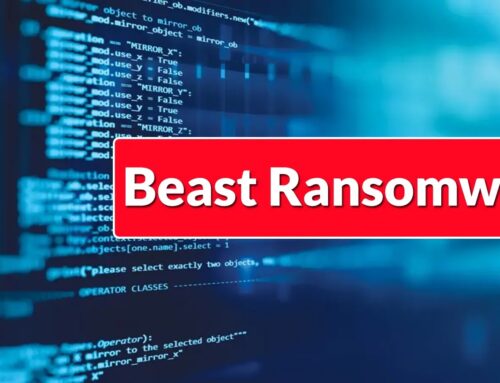
Red Hat Breach Exposes 5000+ High Profile Enterprise Customers at Risk
The digital supply chain, a complex web of interconnected systems and services, is an attractive target for sophisticated cyber adversaries. A recent incident involving Red Hat Consulting’s infrastructure has starkly illuminated this persistent threat, potentially exposing critical data from over 5,000 high-profile enterprise customers. This breach, attributed to the extortion group Crimson Collective, has sent ripples of concern through the cybersecurity community and executive boards alike, underscoring the profound vulnerabilities inherent in third-party service providers.
The Red Hat Breach: A Deep Dive into the Compromise
The compromise of Red Hat Consulting’s systems represents a significant event due to the company’s pivotal role in supporting numerous global enterprises. The extortion group, Crimson Collective, successfully infiltrated Red Hat’s infrastructure, gaining access to what is believed to be sensitive business documentation and proprietary source code. The sheer scale of the potential impact is staggering, with major corporations such as Vodafone, HSBC, American Express, and Walmart identified among the affected customer base.
This incident is not merely a data leak; it’s a strategic blow against the trust placed in a critical software and services provider. The implications extend beyond immediate financial or reputational damage, potentially exposing these organizations to further targeted attacks, intellectual property theft, and regulatory penalties. The nature of the compromised data—critical business documentation and source code—suggests a high level of sophistication in Crimson Collective’s tactics, aiming for maximum leverage in their extortion attempts.
Understanding the Threat Actor: Crimson Collective
Crimson Collective emerges as a formidable threat actor, employing extortion as their primary modus operandi. Their targeting of Red Hat Consulting indicates a calculated approach to compromise a central point of leverage, impacting a broad spectrum of high-value targets indirectly. While specific details about their tactics, techniques, and procedures (TTPs) related to this breach are still emerging, their success in breaching an institution like Red Hat implies advanced capabilities in reconnaissance, exploitation, and post-exploitation persistence.
Extortion groups like Crimson Collective typically aim to exfiltrate sensitive data and then demand a ransom in cryptocurrency, threatening to release the data publicly or sell it to competitors if their demands are not met. The choice of Red Hat as a target highlights a growing trend among cybercriminals to attack supply chain vendors to achieve a broader impact than direct attacks on individual enterprises.
Affected Customers and Broader Implications
The list of potentially affected customers reads like a who’s who of global industry leaders. The exposure of sensitive data belonging to entities like Vodafone, HSBC, American Express, and Walmart carries profound implications:
- Financial Institutions: For banks like HSBC and payment processors like American Express, any compromise of data, especially proprietary systems or customer information, can lead to severe regulatory fines, erosion of customer trust, and direct financial losses.
- Telecommunications: Vodafone’s involvement suggests potential risks to network infrastructure details or sensitive customer communication data.
- Retail Giants: Walmart’s exposure could mean vulnerabilities in supply chain logistics, customer databases, or proprietary business strategies.
- Broader Ecosystem Risk: The compromise of source code from a Red Hat environment could lead to further vulnerabilities if that code is deployed across customer systems, creating a cascade effect of security incidents.
The incident serves as a stark reminder that even robust security postures can be undermined by vulnerabilities in third-party services. Organizations must re-evaluate their vendor risk management programs in light of such sophisticated supply chain attacks.
Remediation Actions and Best Practices
While the full scope of the Red Hat breach and its remediation efforts are ongoing, organizations, particularly those identified as potentially affected, must take immediate and decisive action. General best practices and specific recommendations include:
- Immediate Contact and Information Gathering: Affected customers should immediately engage with Red Hat Consulting for detailed information regarding the specific data potentially compromised and recommended mitigation strategies.
- Enhanced Monitoring: Implement heightened monitoring for unusual activity across networks, endpoints, and data repositories that interacted with Red Hat Consulting services. Look for indicators of compromise (IoCs) provided by Red Hat or threat intelligence feeds.
- Internal Audits and Vulnerability Assessments: Conduct comprehensive internal security audits and penetration tests, focusing on systems and applications that may have been developed using or interfaced with the compromised Red Hat infrastructure.
- Supply Chain Risk Assessment: Reinforce and regularly update your third-party risk management framework. Demand transparency from all vendors regarding their security postures and incident response plans.
- Data Minimization and Segmentation: Review data access policies and implement the principle of least privilege. Segment networks to limit lateral movement in the event of a breach.
- Incident Response Plan Review: Ensure your organization’s incident response plan is up-to-date, tested, and capable of addressing sophisticated supply chain attacks.
- Backup and Recovery: Verify the integrity and availability of your backup and recovery solutions, especially for critical data and source code.
Tools for Detection and Mitigation
Leveraging appropriate tools is crucial for both proactive defense and reactive incident response in the wake of such breaches.
| Tool Name | Purpose | Link |
|---|---|---|
| Endpoint Detection and Response (EDR) Solutions | Real-time threat detection, investigation, and response on endpoints. | Gartner EPP MQ |
| Security Information and Event Management (SIEM) | Centralized logging, correlation, and analysis of security events across the infrastructure. | Splunk, IBM QRadar |
| Vulnerability Scanners | Identify and categorize vulnerabilities in systems and applications. | Nessus, Qualys |
| Threat Intelligence Platforms (TIP) | Aggregate and disseminate threat intelligence, including IoCs related to active campaigns. | Recorded Future, Anomali |
| Static Application Security Testing (SAST) | Analyze source code for security vulnerabilities during development. | HCL AppScan, Synopsys Coverity |
Conclusion: Strengthening the Supply Chain Defense
The Red Hat breach serves as a potent reminder of the interconnectedness of modern digital ecosystems and the critical importance of robust cybersecurity defenses throughout the supply chain. The incident underscores that no organization, regardless of its size or security posture, is immune to sophisticated attacks. For affected customers, proactive engagement with Red Hat, aggressive monitoring, and a comprehensive review of internal security protocols are essential. For the broader industry, it reinforces the need for enhanced vendor vetting, continuous security assessments, and the development of resilient incident response strategies. The battle against cyber extortionists like Crimson Collective requires a collective and adaptive defense, where transparency, collaboration, and continuous improvement are paramount.





